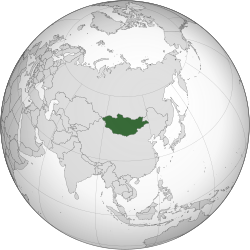| Type of service | Numbering | Examples |
|---|
| Emergency and special calls | 1XX
1XXX
1XXXX | 101 – Fire
1610 – “Speed” Information Agency of Mongolian Radio |
| Fixed telephone services | Access code + area code + exchange code + subscriber number
| Mongolia Telecom subscribers
01+1+45+2222 (+976 1 145 2222)
01+21+2+2222
01+372+2+2222
01+3741+2+222
Mongolian Railway subscribers
02+1+94+2222 (+976 2 194 2222)
02+21+4+2222
02+372+4+2222
02+3741+4+222 |
| Cellular telephone services | Mobile phone numbers in Mongolia consist of 8 digits, starting with 9, 8 or 6. | 90 XXXXXX - Skytel
91 XXXXXX - Skytel
92 XXXXXX - Skytel
93 XXXXXX - G-Mobile
94 XXXXXX - Mobicom
95 XXXXXX - Mobicom
96 XXXXXX - Skytel
97 XXXXXX - G-Mobile
98 XXXXXX - G-Mobile
99 XXXXXX - Mobicom
80 XXXXXX - Unitel
81 XXXXXX - unallocated
82 XXXXXX - unallocated
83 XXXXXX - G-Mobile
84 XXXXXX - unallocated
85 XXXXXX - Mobicom
86 XXXXXX - Unitel
87 XXXXXX - unallocated
88 XXXXXX - Unitel
89 XXXXXX - Unitel
69 6XXXXX - Skytel
66 XXXXXX - ONDO
60 XXXXXX - ONDO
|
| VoIP services | VoIP operator prefix + subscriber number | 70+112222 72+112222 75+112222 77+112222 |
| Wireless local loops | Service identification code + operator selection + subscriber number or operator selection code + subscriber number | 0+5B+XXXXXX |
